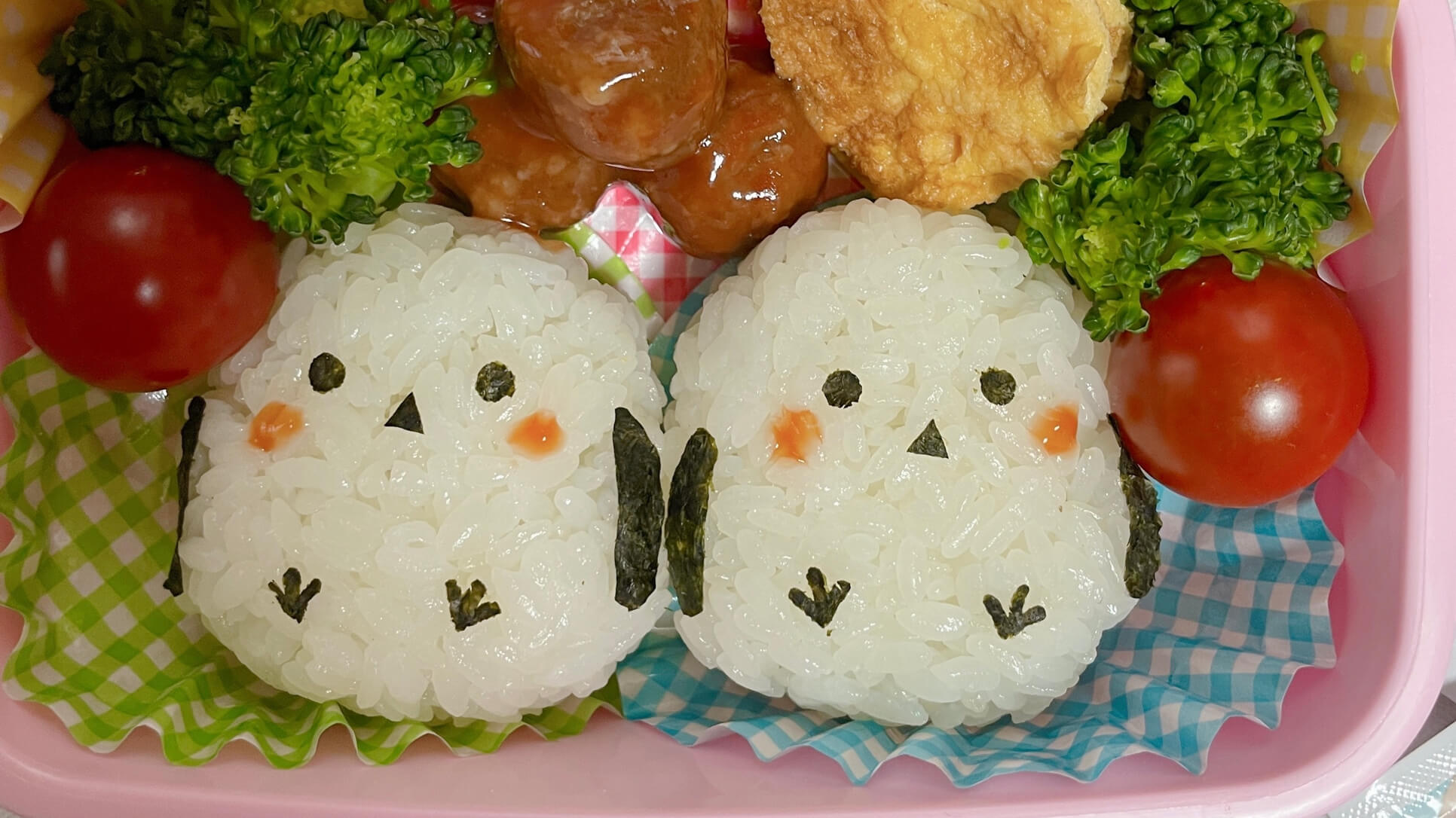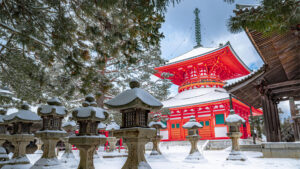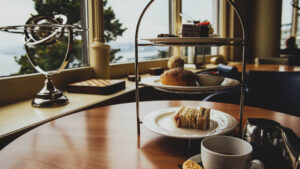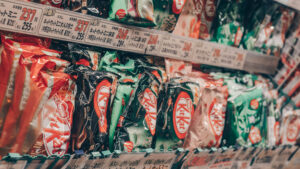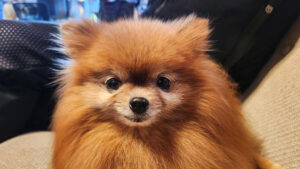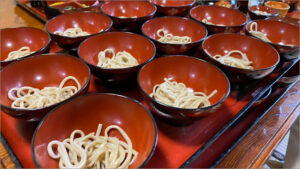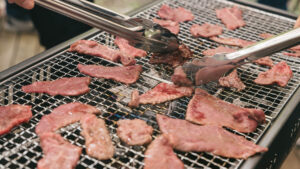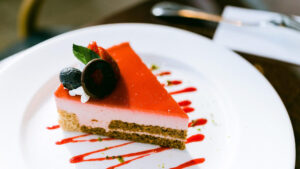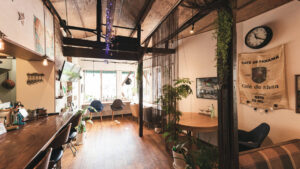Bento—this uniquely Japanese food tradition—is a special part of the culture that blends “thoughtfulness” and “beauty” into a single box. In Japan, homemade bentos brighten everyday life, whether brought to school, work, or special events. Recently, the term “Bento” has gained popularity overseas as well, with Japanese lunch boxes and creative packing techniques drawing attention around the world.
In this article, we’ll explore the charm of Japanese bento culture in depth: from the different types of lunch boxes and how to choose the right one, to adorable design styles, why they’re loved globally, and tips for creating bentos that are both delicious and visually delightful.
Contents
Why Japanese Bento Culture Is Gaining Global Attention
Japanese bento culture goes far beyond simply packing food to go—it embodies values such as color, nutrition, and care. Internationally, the word “bento” is now widely recognized, celebrated for its healthy, beautiful, and eco-friendly style of eating.
The Everyday Presence of “Bento” in Japan
In Japan, people of all ages—from schoolchildren to working adults—bring bento lunches with them every day. It’s not just a meal; it’s a deeply rooted part of daily life and home culture.
A Standard Lunch at School and Work
In Japan, not only schoolchildren but many office workers also bring their own bento lunches. Compared to convenience store meals or dining out, homemade bentos are healthier and more budget-friendly. Typical components include white rice, tamagoyaki (Japanese omelet), karaage (fried chicken), and simmered vegetables—classic comfort foods in Japanese households.
A Symbol of a Mother’s Love
Children’s bentos often come packed with their mother’s love. Seasonal ingredients, cute character-shaped foods, and visually appealing arrangements make bento time both fun and comforting. In Japan, it’s a cherished tradition for mothers to wake up early to prepare bento, reflecting a cultural emphasis on nurturing care within the family.
Balancing Nutrition, Even on Busy Mornings
Though bento-making may seem time-consuming, Japanese families have mastered the art of efficiently preparing well-balanced meals. By using frozen foods, make-ahead dishes, and smart techniques, it’s possible to create a nutritious bento in a short time. These creative solutions are a unique feature of Japanese home cooking.
The Fusion of Aesthetic Beauty and Practicality
Japanese bento strikes an exquisite balance between visual beauty and everyday practicality. Carefully arranged like works of art, each meal delights even before the first bite—satisfying both the eye and the appetite.
Colorful and Photogenic Presentation
Japanese bentos emphasize vibrant color combinations. Red (cherry tomatoes, pickled plum), yellow (tamagoyaki), green (broccoli or spinach), white (rice), and black (nori or sesame)—these natural hues create an appealing and harmonious visual effect. Recently, character bentos (“kyaraben”) and decorative bentos (“decoben”) have gained popularity for their adorable looks, often trending on social media around the world.
Compact Yet Satisfying Portions
Bento boxes may appear small, but they are ingeniously designed to hold a variety of side dishes in an efficient layout. Dividers, food cups, and smart use of small spaces reflect the precision and aesthetics of Japanese craftsmanship. Despite their compact appearance, bentos are surprisingly filling and satisfying.
Packing Style Reflects Japanese Culture
Bento-making embodies values like seasonality and harmony—core elements of Japanese culture. In spring, ingredients might be shaped like cherry blossoms; in autumn, dishes mimic colorful leaves. The arrangement of rice and side dishes, the care taken to avoid sogginess, and the overall attention to detail all reflect the Japanese way of mindful living and seasonal appreciation.
The Global “Bento Boom”
In recent years, Japanese bento culture has gained popularity around the world under the name “Bento.” Its aesthetic presentation, healthy content, and the idea of preparing meals thoughtfully for oneself have resonated with people across the globe.
Japanese Lunchboxes Trending on Social Media
On platforms like Instagram, YouTube, and TikTok, hashtags such as #bento and #japanesebento feature countless user-made lunchboxes. Colorful bentos and cute character-themed designs are celebrated as “edible art,” inspiring videos, tutorials, and reviews from fans worldwide.
A Growing Desire to Try Bento-Making
Many people overseas are expressing interest in trying bento-making themselves or preparing similar meals for their children. With access to Japanese bento boxes, dividers, and small cups, it has become easier than ever to enjoy the bento lifestyle. Japanese lunch accessories are now widely available in online stores and have become popular items in many countries.
A Natural Fit for Health and Sustainability
Part of the global appeal of bento culture lies in its alignment with health-conscious and eco-friendly lifestyles. Homemade bentos allow for control over ingredients, reducing additives and excess fats. Reusable bento boxes, chopsticks, and silicone cups also help reduce disposable packaging, making them a smart choice for sustainable living.
Types of Bento Boxes and Their Unique Features
Bento boxes come in a wide variety of materials and shapes. Understanding the characteristics of each type helps you choose the perfect one that fits your lifestyle and preferences. In this section, we’ll introduce the most popular types of bento boxes and their benefits.
Plastic Bento Boxes
Plastic bento boxes are the most common and widely supported by both beginners and seasoned users. They strike a great balance between convenience and functionality, making them ideal for everyday use.
Lightweight and Easy for Daily Use
The biggest advantage of plastic bento boxes is their lightness. They won’t weigh down your bag and are easy to carry. Plus, they’re resistant to breaking if dropped, making them a great option for kids or meals on the go. They’re reliable tools for busy mornings.
Wide Range of Designs and Colors
From character-themed boxes to minimalist styles, plastic bento boxes come in countless designs. Choosing one that matches your personality adds joy to preparing your lunch. Many also include handy features like dividers and tightly sealed lids.
Microwave and Dishwasher Safe
Most plastic bento boxes are microwave-safe, allowing for quick reheating. Many are also dishwasher-safe, making cleanup easy. These features are especially valuable for daily use, helping save time and effort.
Wooden Bento Boxes (Magewappa, etc.)
Among traditional Japanese lunch boxes, the wooden “magewappa” has recently gained popularity overseas. Crafted from natural materials, these bento boxes offer not only beauty but also excellent functionality in terms of taste and preservation.
Rice Stays Fluffy and Delicious
The greatest charm of magewappa lies in its breathability. The natural wood absorbs excess moisture, keeping the rice from becoming soggy and maintaining a fluffy texture for hours. This makes it ideal for busy days and meals away from home.
Warm and Natural Aesthetic
Made from cedar or cypress, magewappa bento boxes radiate warmth and traditional Japanese beauty. Each piece is handmade by skilled artisans, and the more it’s used, the richer its texture becomes. With their simple yet refined design, they add a touch of elegance to any dining scene.
Care and Handling Tips
Unlike plastic bento boxes, wooden ones require special care. It’s important to wash them by hand soon after use and allow them to dry completely. They are not microwave or dishwasher safe, so always check usage guidelines beforehand.
Also, avoid using harsh detergents or soaking them in water for long periods. With proper care, a wooden bento box can remain beautiful and functional for many years.
Two- or Three-Tier Bento Boxes
Bento boxes with two or three tiers are not only visually appealing but also highly practical. They allow you to neatly separate different types of food, enhancing both presentation and taste. These versatile lunch boxes are perfect for everyday use as well as special occasions.
Convenient Food Separation
Each tier can be used to separate rice, side dishes, and even desserts, preventing flavors from mixing and creating a visually pleasing layout. Moist dishes can be kept apart from dry ones, which is also more hygienic. This style is ideal for those who enjoy variety in color, texture, and flavor.
Perfect for Celebrations and Special Events
In Japan, multi-tiered bento boxes are commonly used during events like cherry blossom viewing, sports festivals, and New Year celebrations. Layering beautiful dishes in each tier gives the impression of a mini “osechi” (traditional festive meal), making it perfect for festive occasions. This presentation style is gaining popularity overseas as a special lunch experience.
Great Capacity for Big Appetites or Long Days
These bento boxes are ideal for those who find a single tier insufficient, or who need a full meal during long outings. Despite their capacity, they’re designed to stack compactly for easy transport. They are especially popular among growing children and busy professionals who work outside.
Charming Designs and Popular Motifs
When it comes to Japanese bento boxes, it’s not just about practicality—their charming and cute designs also captivate fans around the world. From animal themes to traditional Japanese patterns, these bento boxes are sure to bring a smile and make lunchtime more enjoyable.
Animal and Character-Themed Bento Boxes
Especially popular among children and character-loving adults are bento boxes featuring adorable animals or beloved animated characters.
Classic Favorites Among Children
Designs featuring friendly animals like rabbits, bears, or pandas are beloved by young children. These playful designs help make mealtime fun and even encourage picky eaters. They’re perfect for preschoolers and elementary school lunches.
Japanese Characters Like Totoro and Hello Kitty
Bento boxes decorated with popular Japanese characters like Totoro from *My Neighbor Totoro* or Sanrio’s Hello Kitty are in high demand worldwide. For fans of anime and Japanese pop culture, these items serve as both functional lunch boxes and collectible cultural pieces.
Adorable and Gift-Worthy
With their eye-catching designs, many of these bento boxes make thoughtful and practical gifts. They’re especially popular for milestones like starting school, moving away, or studying abroad. Many come in beautifully designed packaging, making them a joy to receive from the moment they’re unwrapped.
Traditional Japanese Patterns and Motifs
Japanese bento boxes often incorporate “Wa” (traditional Japanese) design elements that have been cultivated over centuries. Motifs like cherry blossoms, Mt. Fuji, and cranes not only enhance the aesthetic appeal of the meal but also reflect the depth of Japanese culture.
Good Luck Symbols: Sakura, Mt. Fuji, and Cranes
Symbols representing Japan’s nature and traditions are commonly featured on the lids and sides of bento boxes. For example, cherry blossoms that symbolize spring, Mt. Fuji as the highest and most iconic mountain, and cranes symbolizing longevity and good fortune. Just seeing these designs can bring a sense of peace and joy. They’re considered auspicious in Japanese culture.
Color Palettes Inspired by Japanese Aesthetics
Traditional Japanese colors strike a balance between subtlety and vibrancy. Bento boxes often feature deep reds, indigo blues, and soft greens—colors inspired by nature. These hues evoke a nostalgic warmth and are especially suited to adult users, providing a refined, understated beauty without being flashy.
The Global Appeal of “Japanese Style”
Bento boxes featuring traditional Japanese motifs are popular as souvenirs and are widely available on international online shops. In particular, cherry blossoms and Mt. Fuji are seen by people abroad as quintessential symbols of Japan, making these designs especially sought after.
Minimal and Modern Designs
In recent years, many Japanese bento boxes have adopted minimal and modern aesthetics while still respecting traditional values. These designs, which emphasize form and materials over decoration, appeal to those seeking a refined and stylish lifestyle.
Scandinavian-Inspired Fusion Designs
Japanese and Scandinavian design share key principles: simplicity and warmth. As a result, bento boxes that feature natural wood textures and soft, earthy colors blend well with minimalist interiors. These styles are especially popular among people who appreciate the cozy elegance of Scandinavian living, both in Japan and abroad.
Stylish and Seamlessly Blends into Interiors
Simple bento box designs do not overpower a space, making them a natural fit for kitchens or dining areas. Calm tones like white, gray, or wood grain create a sense of harmony and visual consistency, allowing the bento box to be part of the home décor as well as a functional item.
Perfect for Fans of Simplicity
Bento boxes with no excessive decoration allow the beauty of the food itself to shine. They are ideal for minimalists and those who appreciate simple living. In their understated elegance, these boxes reflect the individuality of their users—offering both aesthetic satisfaction and everyday practicality.
Popular Japanese Bento Boxes
Japan offers a wide range of bento boxes that combine high-quality materials, beautiful design, and excellent functionality. Among the most popular are the traditional “magewappa” wooden boxes, character-themed lunch boxes, and stylish modern designs. Here, we’ll introduce some of the most beloved types of Japanese bento boxes.
Classic Magewappa Series
The traditional “magewappa” bento box is a symbol of Japan’s bento culture. Crafted from natural woods such as cedar or cypress using centuries-old woodworking techniques, magewappa is loved for both its aesthetic warmth and practical use.
Beautiful Wood Grain Crafted by Artisans
Each magewappa box is one of a kind, showcasing unique wood grain patterns. The surfaces are carefully finished by skilled artisans, offering a natural elegance that soothes the eye and hand. These boxes serve as a beautiful natural backdrop that enhances the visual appeal of the food inside.
Lightweight and Easy to Carry
Despite being made of wood, magewappa boxes are remarkably lightweight. They fit neatly into work or school bags and are easy to carry without adding bulk. Users are often surprised by how light and comfortable they feel in hand.
Perfect for Natural Lifestyle Lovers
For those who appreciate simple, natural living, magewappa is the perfect choice. It transforms everyday lunches into special, calming moments surrounded by the warmth of wood. From its subtle fragrance to its gentle texture, this bento box helps you enjoy the joy of eating itself.

Akita Cedar Magewappa Bento Box
Elegant plum flower magewappa bento box handcrafted from Akita cedar. Lightweight and authentic.

Miyoshi Shikki Bento Box – 2-Tier
800ml cedar bento box in broad bean shape. 2-tier, urethane-coated, durable and easy to clean. Made in Japan.

IPPINKA Magewappa Bento Box
600ml cedar bento box, lightweight and dishwasher-safe. Includes belt.
Modern Two-Tier Bento Boxes
Modern two-tier bento boxes are designed to suit today’s lifestyles, combining functionality with stylish aesthetics. They can be used according to portion size and meal variety, making them a popular choice across generations.
Secure Lids for Each Tier
Most two-tier bento boxes come with individual lids for each compartment, ensuring secure sealing. Even dishes with moisture, such as soups or simmered vegetables, can be transported safely—perfect for commuting, school, or outings.
Wide Range of Color Options
These modern bento boxes are available in a broad spectrum of colors—from simple white and black to pastel tones and muted hues. Choosing one that matches your personal style or coordinating colors with family or partners can be part of the fun.
Stylish and Practical
With sleek, minimalist forms and Scandinavian-inspired designs, these bento boxes also blend seamlessly with home decor. Many models are microwave- and dishwasher-safe, making daily use a breeze. Combining both function and form, two-tier bento boxes represent the “smart lunch style” of modern Japan.

OSK SMART UP BLW-38HE
2-tier bento with divider and cooling case. Compact, stylish, and Japanese-made convenience.

Japanese Wooden Bento Box
Leakproof 2-tier wooden bento box with divider and tray lid. Lightweight, durable, and stylish.

Takenaka Slim Senshu Bento Box
Slim 2-tier bento box with 610ml capacity. Stylish, compact, dishwasher-safe. Made in Japan.
Complete Lunch Box Sets with Chopsticks and Bags
For a smarter and more convenient bento experience, lunch box sets that include chopsticks and bags are ideal. These all-in-one sets are stylish, functional, and gaining popularity overseas.
Ready-to-Use All-in-One Sets
Sets that come with a bento box, chopsticks, and a matching lunch bag are perfect for immediate use. They’re especially popular among beginners and as thoughtful gifts. Some even include chopstick cases and bands, ensuring nothing is forgotten.
Perfect for Travel and Picnics
These compact and portable sets are great for travel, hiking, and outdoor picnics. Many sets feature insulated bags for keeping food warm or cool, allowing you to choose one that fits your lifestyle and activities.
Ideal Gift Sets
Stylish, coordinated sets make wonderful gifts. Bento boxes with traditional Japanese patterns or woodgrain finishes, paired with matching chopsticks, are especially appreciated by international recipients. Many come pre-wrapped in cute packaging, adding a special touch to your gift.

OSK Rabbit Moon Bento Box Set
Microwave & dishwasher safe. Includes chopsticks and bento bag. Updated red model PW-28C. Made in Japan.
Global Popularity of the “Bento Lifestyle”
Japanese bento culture is now gaining popularity around the world. In today’s busy lives, the habit of preparing bento for oneself or loved ones has been embraced in many countries as a way to promote health. Its cute presentation and eco-friendly approach are widely appreciated, making bento a culture that enriches everyday life.
Bento Culture Is Transforming Lifestyles
In Japan, bento is more than just a meal—it represents the spirit of handmade care. Preparing a bento with thought and effort is a way of expressing love and consideration, influencing how people live and interact with those around them.
A Habit of Caring for Yourself and Your Family
Choosing ingredients and planning menus with your own or your family’s health in mind—like “Let’s include more vegetables today” or “Add a small sweet treat”—naturally brings thoughtfulness into daily routines. These small gestures can strengthen family bonds.
Promoting Health and Eco-Consciousness
Homemade bento offers better control over nutrition than eating out or ordering takeout, supporting a healthier lifestyle. Additionally, using reusable containers and reducing disposable packaging makes it an environmentally friendly choice. This sustainable approach is gaining attention globally.
Turning Everyday Lunch into Joy
A self-made bento doesn’t just taste good—it brings visual satisfaction too. Packing colorful foods into your favorite box can make lunch feel like a little reward. Enjoying meals this way helps relieve stress and adds delight to everyday life.
Tips and Tricks for Making Bento
To make bento-making enjoyable and sustainable, it helps to know some practical tips and techniques. Since bento is often made daily, focusing on efficiency, visual appeal, and balanced flavors is key. Here are beginner-friendly basics and useful ideas to improve your bento routine.
Basic Packing Techniques
Packing a bento well requires a few simple tricks. The ideal ratio of rice to side dishes is either 5:5 or 4:6, which helps balance portions and visual appeal.
Pack rice gently without pressing it too firmly to maintain a fluffy texture. Use dividers or cups to keep flavors from mixing, and layer items with some height to give the lunch a visually dynamic presentation.
Choosing Colorful Ingredients
A colorful bento is naturally more appetizing. A good guideline is to include ingredients in five colors: red, yellow, green, white, and black (or brown). This also promotes nutritional balance.
- Red: Cherry tomatoes, carrots, red bell peppers
- Yellow: Tamagoyaki (Japanese omelet), pumpkin, yellow bell peppers
- Green: Broccoli, spinach, edamame
- White: Rice, potato salad, kamaboko (fish cake)
- Black/Brown: Nori (seaweed), burdock root, shiitake mushrooms
Adding small portions of each color not only enhances appearance but also ensures a balanced, nutritious meal.
Tips for Delicious Cold Dishes
Since bento is usually eaten at room temperature, dishes that taste good even when cold are ideal. Fried or grilled items retain their savory flavor and are consistently popular.
Stronger seasonings like sweet soy sauce or savory marinades help maintain flavor when cooled. Avoid watery ingredients, or drain and simmer them well before packing to keep the bento fresh and flavorful.
Bento: A Symbol of Japanese Culture and Thoughtfulness
Japanese bento is more than just lunch—it’s a cultural expression deeply rooted in daily life, reflecting thoughtfulness and aesthetic sensibility. From its colorful presentation and balanced nutrition to the careful packing methods, every detail embodies the Japanese appreciation for beauty and care.
With bento boxes crafted from thoughtful materials and designs, meals that taste delicious even when cold, and eco-friendly practices, the bento lifestyle offers many ways to enrich everyday living. Why not discover your own favorite bento box and enjoy the uniquely Japanese way of life through bento?
